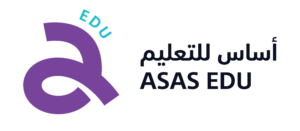الوصف
Unit 401: Planning for progression
UAN: F/501/6878, Level: 1, Credit value: 3 and GLH: 20
Aim: The aim of this unit is to help the learner to plan for progression by understanding their programme and the facilities and support available and by being able to recognise and build on personal strengths.
Assessment: Learner portfolio
Barring his unit is barred with the following units within 5546:
201 Entry 2 Planning for progression, 301 Entry 3 Planning for progression , 501 Level 2 Career planning and making applications
Learning outcome 1: understand own study or training programme
|
Assessment criteria |
Guidance and Evidence |
Range |
|
1.1 define what he/she aims to achieve by the end of the study or training programme |
For criterion 1.1 the learner needs to define what he/she needs to achieve in terms of qualifications, experience and/or job role. Evidence may include a learner statement. |
|
|
1.2 describe what he/she needs to do in order to follow the programme |
For 1.2 the learner needs to describe what he/she needs to do to follow the programme eg attend timetabled sessions, complete set tasks. Evidence may include: a learner statement or annotated documents eg individual learning plan (ILP), training agreement, timetable, action plan. |
|
|
1.3 identify the centre rules and regulations that affect him/her as a learner. |
For 1.3 the learner needs to identify the rules and regulations that affect him/her as a learner. Evidence may include an annotated student handbook and induction pack but a handbook or induction pack without annotation or further evidence will not be sufficient. |
Learning outcome 2: know the facilities and services provided in the place of study or training
|
Assessment criteria |
Guidance and Evidence |
Range |
|
2.1 describe the facilities provided in the place of study or training |
2.1 the learner needs to describe the facilities provided (eg library, IT, canteen, crèche). |
|
|
2.2 outline the support available for learners. |
2.2, the learner needs to outline the support available (eg internal support could be tutor guidance and student support services and external support could be Connexions and Information, Advice and Guidance (IAG) services). |
Learning outcome 3: recognise personal strengths (skills, qualities and attitudes) needed for learning and work
|
Assessment criteria |
Guidance and Evidence |
Range |
|
3.1 identify positive qualities and attitudes needed for study and work |
For criterion 3.1 the learner needs to identify a range of positive qualities and attitudes (eg being honest, punctual, conscientious, attentive to detail, polite, hard working, motivated).This criterion relates to qualities and attitudes in general and is not specific to the individual learner. The learner does not need to distinguish between qualities and attitudes. |
|
|
3.2 outline his/her own personal strengths |
For 3.2 the learner needs to outline his/her own particular strengths (skills, qualities and attitudes). The learner does not need to distinguish between skills, qualities and attitudes |
|
|
3.3 give an example of something related to learning and work that he/she felt good about and something he/she feels confident doing. |
For 3.3 the learner needs to give an example of something relating to learning or work that he/she felt good about (eg successfully completing a task or an activity) and something he/she feels confident doing (eg answering the telephone, meeting new people, using a till). |
|
|
Note: Evidence for 3.1 to 3.3 may include a learner statement/list or audio/video recordings of individual or group discussion. |
||
Learning outcome 4: action plan for self-improvement
|
Assessment criteria |
Guidance and Evidence |
Range |
|
4.1 identify areas for improvement. |
For criterion 4.1 the learner needs to consider what he/she can currently do in order to identify areas where he/she needs to improve. Learners should select areas for their own individual self development (eg communication skills, punctuality, appropriate behaviour for the workplace/place of study). |
|
|
4.2 identify realistic targets. |
For 4.2 the learner needs to identify realistic targets eg demonstrate effective listening skills, arrive on time for five days. Targets should be specific, measurable, achievable, realistic and time bound. |
|
|
4.3 prepare an action plan or contract to meet targets |
For 4.3 the learner needs to prepare an action plan or contract to meet the targets identified in 4.2. The learner should list suitable activities. For example, to develop listening skills activities could include listening for meaning, practising not interrupting/appropriate responses in role plays, observing appropriate behaviour on videos, practising the skill with friends and family. Activities to improve punctuality could include using an alarm clock, checking bus/train timetables and planning ahead. An appropriate person should agree the plan. This could be the assessor, tutor, supervisor or other appropriate person. |
|
|
4.4 identify arrangements for reviewing progress. |
For 4.4 the learner needs to identify arrangements for reviewing the plan. This is likely to include person, place, date and time. |
|
|
Note: Evidence for 4.1 to 4.4 is likely to be a detailed written action plan. |
||







المراجعات
لا توجد مراجعات بعد.